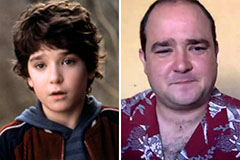Our Chemie Statements
Table of ContentsThe Main Principles Of Chemie What Does Chemie Mean?The Of ChemieExcitement About ChemieThe Single Strategy To Use For ChemieThe 7-Second Trick For Chemie
By Bojanna Shantheyanda, Sreya Dutta, Kevin Coscia and David SchiemerDynalene, Inc. Liquid cooling, which can be accomplished using indirect or direct means, is utilized in electronic devices applications having thermal power thickness that might surpass risk-free dissipation through air cooling. Indirect liquid cooling is where warmth dissipating digital elements are literally separated from the fluid coolant, whereas in situation of straight air conditioning, the components are in straight call with the coolant.In indirect air conditioning applications the electrical conductivity can be important if there are leaks and/or spillage of the liquids onto the electronics. In the indirect air conditioning applications where water based fluids with corrosion preventions are usually utilized, the electrical conductivity of the fluid coolant primarily depends on the ion focus in the fluid stream.
The boost in the ion focus in a shut loop liquid stream might occur as a result of ion seeping from metals and nonmetal parts that the coolant fluid is in contact with. Throughout operation, the electric conductivity of the fluid might boost to a level which might be damaging for the cooling system.
10 Simple Techniques For Chemie
(https://chemie-141534.webflow.io/)They are bead like polymers that are qualified of exchanging ions with ions in a service that it is in contact with. In the present work, ion leaching tests were done with numerous metals and polymers in both ultrapure deionized (DI) water, i.e. water which is treated to the greatest levels of pureness, and low electrical conductive ethylene glycol/water combination, with the determined change in conductivity reported with time.
The examples were allowed to equilibrate at space temperature for 2 days prior to tape-recording the first electric conductivity. In all tests reported in this research fluid electrical conductivity was measured to an accuracy of 1% utilizing an Oakton disadvantage 510/CON 6 collection meter which was adjusted before each dimension.
4 Simple Techniques For Chemie
from the wall surface home heating coils to the center of the furnace. The PTFE example containers were placed in the heating system when constant state temperature levels were gotten to. The examination setup was eliminated from the heater every 168 hours (7 days), cooled down to area temperature level with the electrical conductivity of the fluid measured.
The electric conductivity of the fluid sample was kept an eye on for a total amount of 5000 hours (208 days). Figure 2. Schematic of the indirect shut loophole cooling down experiment set-up - heat transfer fluid. Table 1. Elements made use of in the indirect shut loophole cooling down experiment that touch with the fluid coolant. A schematic of the experimental setup is displayed in Number 2.

Not known Incorrect Statements About Chemie
The modification in fluid electric conductivity was kept an eye on for 136 hours. The liquid from the system was accumulated and kept.

0.1 g of Dowex resin was contributed to 100g of liquid examples that was taken in a separate container. The blend was mixed and change in the electrical conductivity at room temperature level was measured every hour. The determined change in the electric conductivity of the UP-H2O and EG-LC test fluids having polymer or steel when involved for 5,000 hours at 80C is shown Figure 3.
The Buzz on Chemie
Figure 3. Ion seeping experiment: Calculated change in electrical conductivity of water and EG-LC coolants containing either polymer or metal samples when immersed for 5,000 hours at 80C. The outcomes show that steels contributed fewer ions into the liquids than plastics in both UP-H2O and EG-LC based coolants. This might be as a result of a slim steel oxide layer which may work as an obstacle to ion leaching and cationic diffusion.
Liquids containing polypropylene and HDPE showed the most affordable electrical conductivity changes. This can be because of the brief, stiff, straight chains which are less most likely to contribute ions than longer branched chains with weak intermolecular forces. Silicone additionally performed well in both examination fluids, as polysiloxanes are generally chemically inert because of the high bond power of the silicon-oxygen bond which would protect against deterioration of the material into the liquid.
Indicators on Chemie You Need To Know
It would be expected that PVC would certainly generate similar results to those of PTFE and HDPE based upon the comparable chemical structures of the materials, nonetheless there may be other contaminations existing in the PVC, such as plasticizers, that may impact the electric conductivity of the liquid - high temperature thermal fluid. Furthermore, chloride teams in PVC can additionally leach right into the examination liquid and can cause a boost in electric conductivity
Polyurethane completely disintegrated right into the examination liquid by the end of 5000 hour examination. Prior to and after pictures of metal and polymer samples immersed for 5,000 hours at 80C in the ion seeping experiment.
Measured modification in the electrical conductivity of UP-H2O coolant as a function of time with and without resin cartridge in the shut indirect air conditioning loop experiment. The determined modification in electric conductivity of the UP-H2O for 136 hours with and without ion exchange material in the loophole is received Figure 5.
 Jennifer Grey Then & Now!
Jennifer Grey Then & Now! Neve Campbell Then & Now!
Neve Campbell Then & Now! Bradley Pierce Then & Now!
Bradley Pierce Then & Now! Macaulay Culkin Then & Now!
Macaulay Culkin Then & Now! Elisabeth Shue Then & Now!
Elisabeth Shue Then & Now!